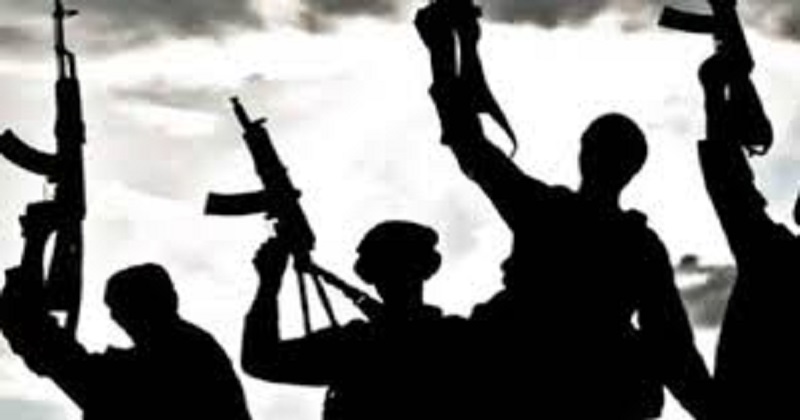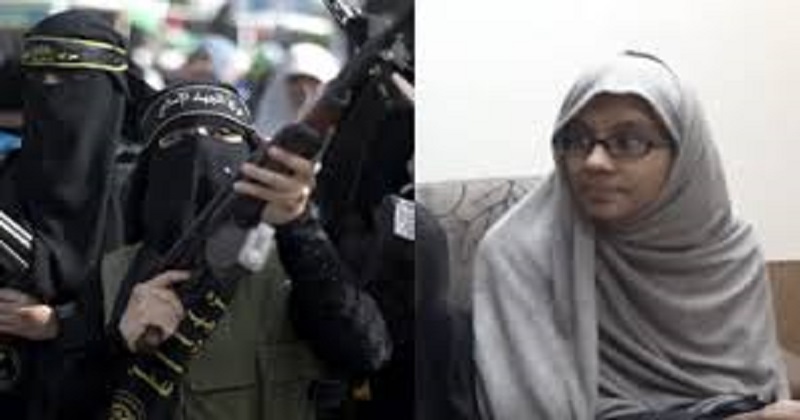
A resident of Kasaragod, Kerala, approached the police in July 2016 saying that his son Abdul Rashid, 30, along with his wife Ayisha, also known as Sonia Sebastian, and their child had been missing for over a month after leaving for Mumbai. The investigation revealed that this was not the only case where a couple was not traceable from the same area. After further investigation, it became evident that these people had left the country to join ISIS.
A breakthrough occurred on August 1, 2016, with the arrest of Yasmin Mohammed Zahid, 29, of Delhi’s Muslim ghetto Batla House near Jamia Nagar – the location of a police shootout in an anti-terror operation in 2008 in which a Delhi Police officer was killed and a terror suspect belonging to the Indian Mujahideen was also killed.
A charge sheet filed by the National Investigation Agency (NIA), India’s federal anti-terror unit, alleges Yasmin supported ISIS activities in India when she was intercepted with her child at the Indira Gandhi International Airport in Delhi before boarding a flight to Afghanistan in 2017. An investigation revealed that 21 Indians, some of them married couples with young children, left for Afghanistan to join ISIS-Khorasan, the terror group’s wing based in Nangarhar province in the eastern part of Afghanistan bordering Pakistan.

The Indian agencies keep an eye on Khorasan
The beginning of India’s relationship with ISIS-Khorasan and the growing interest of Indian agencies in tracking ISIS in the region is where the modern relationship between India and ISIS began. The historical region of Khorasan comprises areas in northeastern Iran, northern Afghanistan, and southern Turkmenistan. Ayisha alias Sonia Sebastian, one of the women whose husbands were killed, is in Afghan prison after her husbands were killed in Afghanistan.
Following a crackdown in Afghanistan, these women and ISIS fighters surrendered in 2019 and have been in jail since then. Close to 300 Pakistanis, a few Chinese, and Bangladeshis are in jail. Over 1,400 people had surrendered to Afghan forces. ISIS-Khorasan, a terror group offshoot with a majority of Afghani and Pakistani recruits along with those from the Indian subcontinent, has been accused of carrying out the attack outside Kabul airport, where over 80 people were killed, including 12 US troops.

Gurudwara attack
In addition, the National Investigation Agency is investigating possible Indian involvement in the attack on a Gurdwara in Kabul carried out by ISIS-Khorasan. A group of three gunmen stormed Gurdwara Har Rai Sahib in Shor Bazar of Old City in Kabul, Afghanistan, threw grenades and opened fire, killing 25 people, including Indian citizen Tian Singh, a resident of New Delhi. The attack also injured eight others in the Gurdwara.
The proscribed terrorist group Islamic State-Khorasan Province (IS-KP) took responsibility for the attack on social media platforms, claiming that an Indian national with the Kunya or Arabic name Abu Khalid al-Hindi carried out the killings against Muslims in Kashmir.
During the attack, Afghan security forces were able to kill Mohammed Muhasin, a native of Kasaragod district, Kerala, who had worked for the terrorist group, while another terrorist managed to flee the scene. The NIA also started an investigation prior to the attack, pertaining to the arrest of two persons, namely Jahanzaib Sami and his wife Hina Bashir for being affiliated with ISKP (Islamic State-Khorasan Province).
The Pakistani Connection
Afghan security forces arrested several people following the attack on the gurdwara, including a Pakistani citizen, Aslam Farooqui Akhundzada, and a Kashmiri terrorist, Aijaz Ahangar, wanted for over two decades. The arrest of the two sparked further interest in India as investigators searched for clues to nail Pakistan-ISIS (K) and Kashmir militancy links. Farooqui’s links with Lashkar-e-Taiba suggest a Pakistani angle in the attack on the Gurudwara.
There is more evidence of Pakistan’s links to the Khorasan faction of ISIS. From the beginning, it had close ties with terror groups in Pakistan. Teherik-e-Taliban Pakistan commander Hafiz Saeed from Orkazai was the first Wali or commander of the group in Afghanistan. The Islamic State announced earlier this year that its new wing, the Wilayah of Hind or India Province, would operate from Kashmir. It was always the Khorasan faction that led earlier attacks attributed to ISIS in Kashmir.
In a report of the UN Security Council concerning the Taliban and other associated individuals and entities that constitute a threat to the peace, stability, and security in Afghanistan just before the collapse of the Afghan government stated that despite territorial, leadership, manpower, and financial losses during 2020 in Kunar and Nangarhar Provinces, the Islamic State in Iraq and the Levant-Khorasan (ISIL-K) continues to pose a threat.
ISIL-K is trying to remain relevant and to rebuild its ranks, with a focus on recruiting and training new supporters from the ranks of Taliban who reject the peace process, according to the report. Reports state that there is a core group of 1500-2200 fighters, but smaller cells are active throughout the country. In Kunar, the majority of the population is Afghan and Pakistani, while smaller groups in Badakhshan, Kunduz, and Sar-e-Pol are primarily Tajiks and Uzbeks.
Read more: ‘Beer buffs can rejoice’: You can get more relief with beer than with paracetamol
According to the report, the Islamic State-Khorasan has been carrying out more attacks in Afghanistan. The group claimed or attributed 77 attacks in the first quarter of 2021. ‘The number of claimed/attributed attacks increased over the same period in 2020, when it was much lower, at 21. Overall, however, the number of ISIL-K attacks has continued to decline each year. In the period between April 2019 and March 2020, 572 attacks were recorded, while in the same period between 2020 and 2020, 115 attacks were recorded, a decline of almost 80 percent,’ the report states.
Shahab al-Muhajir (aka Sanaullah) currently leads the group. Al-Muhajir was appointed by the ISIL core in June 2020 via communiqué, following the abduction by Afghan special forces of Aslam Farooqi, the then head of ISIL-K, his predecessor Zia ul-Haq (alias Abu Omar Khorasani) and senior ISIL-K members.

Post Your Comments